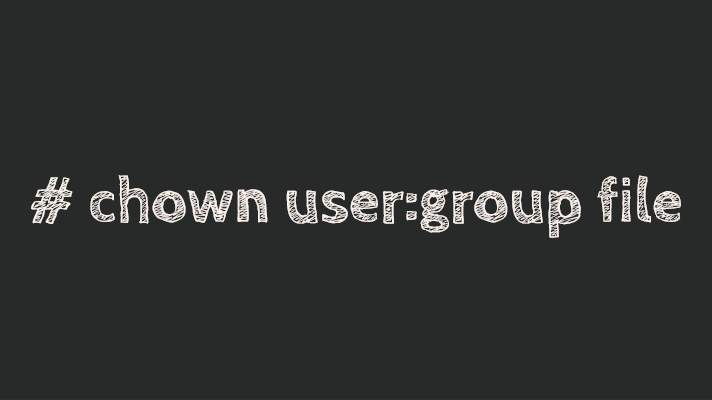chown example

One of the most useful and powerful basic Unix commands, chown command allows you to change ownership of specified files and directories – change user or group owner.
chown Must be Run as root chown is one of these commands that must be run as root. Running it as a regular user will not work: one user can’t change even its own files so that they belong to another user.
Basic chown Example
I’ll start in my home directory /home/greys. Let’s use touch command to create a file named try and then use sudo command to become root:
[greys@rhel8 ~]$ touch try
[greys@rhel8 ~]$ sudo -i
[sudo] password for greys:
[root@rhel8 ~]# cd /home/greys
[root@rhel8 /home/greys]# ls -ald try
-rw-rw-r--. 1 greys greys 0 Feb 20 06:44 tryAs you can see, the file rightfully belongs to me and my group: greys:greys.
Let’s change the owner and owner group to root:
[root@rhel8 /home/greys]# chown root:root try
[root@rhel8 /home/greys]# ls -al try
-rw-r--r--. 1 root root 0 Feb 20 06:44 trychown with Verbose Reporting
If we use the -v command line option for chown, it will confirm every action:
[root@rhel8 /home/greys]# chown -v greys:greys try
changed ownership of 'try' from root:root to greys:greyschown Using Reference File
A really cool way of using chown and also a great gateway to shell scripting is making chown inspect a given (reference) file and then apply its ownership information to other specified files. So you’re making chown command confirm owner and group of a file and then apply this to lots of other files – all without really knowing or specifying the actual ownership info. That’s while such a file is called reference file.
For instance, look at the chrony config files in /etc directory. See how /etc/chrony.keys file belongs to root:chrony?
[root@rhel8 /home/greys]# ls -al /etc/chrony.*
-rw-r--r--. 1 root root 1083 Apr 4 2018 /etc/chrony.conf
-rw-r-----. 1 root chrony 481 Apr 4 2018 /etc/chrony.keysHere’s how you can make chown apply the same ownership details to my /home/greys/try file:
[root@rhel8 /home/greys]# chown --reference=/etc/chrony.keys try
[root@rhel8 /home/greys]# ls -la try
-rw-r--r--. 1 root chrony 0 Feb 20 06:44 tryPretty cool, huh?







